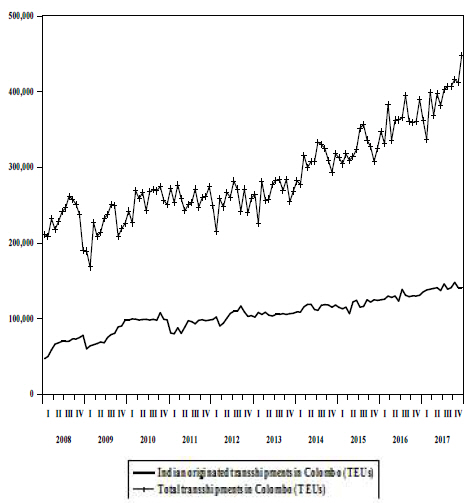1
Akaike, H.1973), Information theory and an extension of the maximum likelihood principle. In: Proceedings of the Second International Symposium on Information Theory B. N. Petrov, F. Caski267-281. Budapest: Akademiai Kiado.
2
Amir H.
Alizadeh
and Nikos K. Nomikos(2003), ŌĆ£The price-volume relationship in the sale and purchase market for dry bulk vesselsŌĆØ, Maritime Policy & Management, Vol. 30, No. 4, pp. 321-337. 0308-8839.

3
Elton
Fernandes
and Ricardo Rodrigues Pacheco(2010), ŌĆ£The causal relationship between GDP and domestic air passenger traffic in BrazilŌĆØ, Transportation Planning &Technology, Vol. 33, No. 7, pp. 569-581. 0308-1060.

4
Granger, C.1969), Investigating causal relations by econometric models and cross spectral methods..
5 2016), Retrieved January 5, 2018. http://www.joc.com/port-news/asian-ports.html.
6
Lili
Song
and Jianing Mi(2016), ŌĆ£Port infrastructure and regional economic growth in China: a Granger causality analysisŌĆØ, Maritime Policy & Management, Vol. 43, No. 4, pp. 456-468. 0308-8839.

7 d s list top hundred container ports: ranking, Maritime Intelligence informa. 2017), https://maritimeintelligence.informa.com/content/top-100-success.
8 i Mutascu(2016), ŌĆ£Government revenues and expenditures in the East European Economies: A Bootstrap Panel Granger Causality ApproachŌĆØ, Eastern European Economics, Vol. 54, No. 6, pp. 489-502. 0012-8775.

9 i Jamwal2017), Does South India need three transshipment ports to compete with Colombo? Retrieved January 5, 2018. http://thewire.in/201652/south-india-trans-shipment-ports-enayam/html.
10
Prabir
De Buddhadeb Ghosh
(2003), ŌĆ£Causality between performance and traffic: an investigation with Indian portsŌĆØ, Maritime Policy & Management, Vol. 30, No. 1, pp. 5-27. 0308-8839.

11
Said, S. E. and D. Dickey(1984), ŌĆ£Testing for Unit Roots in Autoregressive-Moving Average Models of Unknown OrderŌĆØ, Biometrika Trust, Vol. 71-3, pp. 599-607.
12
Schwarz, G.1978), Estimating the Dimension of a Model.
13
14 UNCTADŌĆ£United Nations Conference on Trade and DevelopmentŌĆØ, Review of Maritime Transport, (2017), Vol. 64, pp. 102.
15
Park, W. K.1998.
16
Xin
Tian
, Liming Liu and Shouyang Wang2015.




